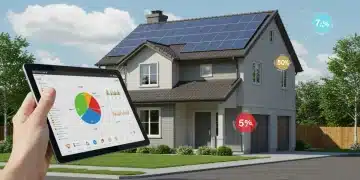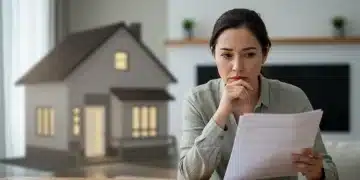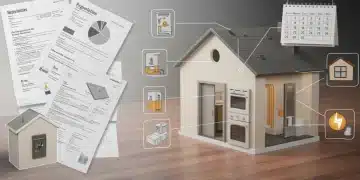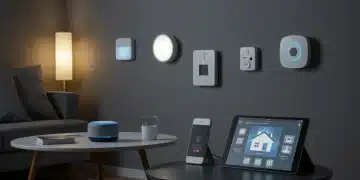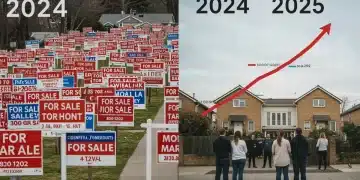Smart Blinds & Shades: Privacy, Efficiency, 2025 Financial Impact
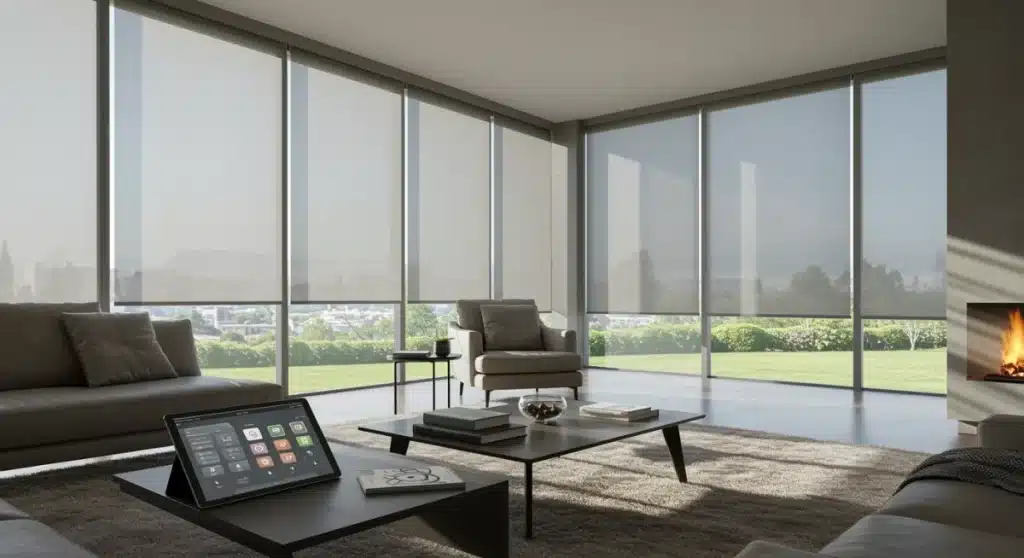
Smart blinds and shades are increasingly vital for enhancing home privacy and energy efficiency, with significant financial implications projected for 2025 as adoption rates rise.
The rapidly evolving landscape of smart home technology continues to reshape residential living, with Smart Blinds and Shades: Enhancing Privacy and Energy Efficiency in 2025 (FINANCIAL IMPACT) emerging as a critical focus for homeowners and industry observers alike. These innovative systems are not merely a luxury but a strategic investment, promising substantial improvements in both operational costs and personal well-being.
The Rise of Smart Blinds: A New Era of Home Automation
The integration of smart blinds into everyday homes marks a significant leap in home automation. These systems offer unparalleled convenience, allowing users to control natural light, privacy, and thermal comfort with a tap on a smartphone or a simple voice command. As of early 2025, market analytics indicate a robust growth trajectory, driven by consumer demand for integrated, efficient, and secure living spaces.
This surge in adoption is not accidental; it reflects a broader societal shift towards sustainable living and technologically advanced environments. Smart blinds, equipped with sensors and connectivity, can adapt to changing weather conditions, optimize sunlight exposure, and even learn user preferences over time, making them a dynamic component of any modern smart home.
Technological Advancements Driving Adoption
Recent developments in sensor technology and AI have propelled smart blinds beyond simple remote control. Current models boast advanced features that enhance their utility and appeal.
- Environmental Sensing: Integrated light and temperature sensors allow blinds to automatically adjust, preventing excessive heat gain or loss.
- Voice Control Integration: Seamless compatibility with major smart home ecosystems like Amazon Alexa, Google Assistant, and Apple HomeKit provides effortless control.
- Predictive Scheduling: AI-driven algorithms learn daily routines and adjust blinds accordingly, anticipating user needs and optimizing energy use.
- Enhanced Security Features: “Away mode” settings can simulate occupancy by randomly opening and closing blinds, deterring potential intruders.
The continuous innovation in these areas ensures that smart blinds remain at the forefront of smart home development, offering increasingly sophisticated solutions for comfort and efficiency.
Energy Efficiency: A Core Benefit for 2025 Homeowners
For homeowners in 2025, the financial impact of energy consumption is a primary concern. Smart blinds and shades directly address this by acting as dynamic insulators, significantly reducing heating and cooling costs. By intelligently managing solar gain and heat loss through windows, these systems contribute to a more stable indoor climate, lessening the burden on HVAC systems.
Reports from leading energy efficiency organizations highlight that windows can account for up to 25-30% of a home’s heat loss or gain. Smart blinds, through their automated adjustments, can mitigate a substantial portion of this energy waste. This translates into tangible savings on utility bills, making the initial investment in smart window treatments a financially sound decision over time.
Quantifiable Savings and ROI
The return on investment (ROI) for smart blinds is becoming increasingly clear. Studies from recent months indicate that homes equipped with these systems can see a reduction in energy consumption directly attributable to window performance.
- Reduced HVAC Usage: Automated adjustments minimize the need for manual thermostat changes, leading to less wear and tear on heating and cooling units.
- Peak Demand Management: By pre-cooling or pre-heating spaces with strategic blind adjustments, homes can avoid peak energy pricing hours.
- Tax Incentives and Rebates: Many regions are now offering incentives for energy-efficient home improvements, including smart window coverings, further boosting their financial attractiveness.
- Increased Property Value: Homes with integrated smart technology, particularly those that offer demonstrable energy savings, often command higher resale values.
These financial benefits underscore why smart blinds are not just a convenience, but a strategic asset for homeowners focused on long-term savings and property enhancement.
Enhancing Privacy and Security with Smart Window Treatments
Beyond energy savings, Smart Blinds Efficiency also plays a crucial role in bolstering home privacy and security. In an increasingly connected world, homeowners prioritize control over their personal space and protection against external threats. Smart blinds offer both, providing on-demand privacy and an added layer of defense against intruders.
The ability to instantly close all blinds with a single command, whether from home or remotely, offers peace of mind. This is particularly valuable in urban environments or for homes with large windows. Furthermore, the integration with smart home security systems allows for synchronized actions, such as blinds closing automatically when the alarm is armed or an unusual activity is detected.
Advanced Privacy Features
The evolution of smart blinds includes features specifically designed to enhance privacy without sacrificing natural light or views entirely.
- Timed Schedules: Program blinds to close at dusk and open at dawn, ensuring privacy during nighttime hours.
- Randomization Mode: When away, blinds can operate on a randomized schedule, mimicking human presence and deterring potential surveillance.
- Partial Closures: Many systems allow for precise control over the degree of closure, enabling privacy in specific sections of a window while maintaining light entry in others.
- Integration with Geofencing: Blinds can automatically adjust based on the homeowner’s proximity, closing when they leave and opening upon their return.
These features collectively transform window treatments from passive elements into active components of a comprehensive home security and privacy strategy.
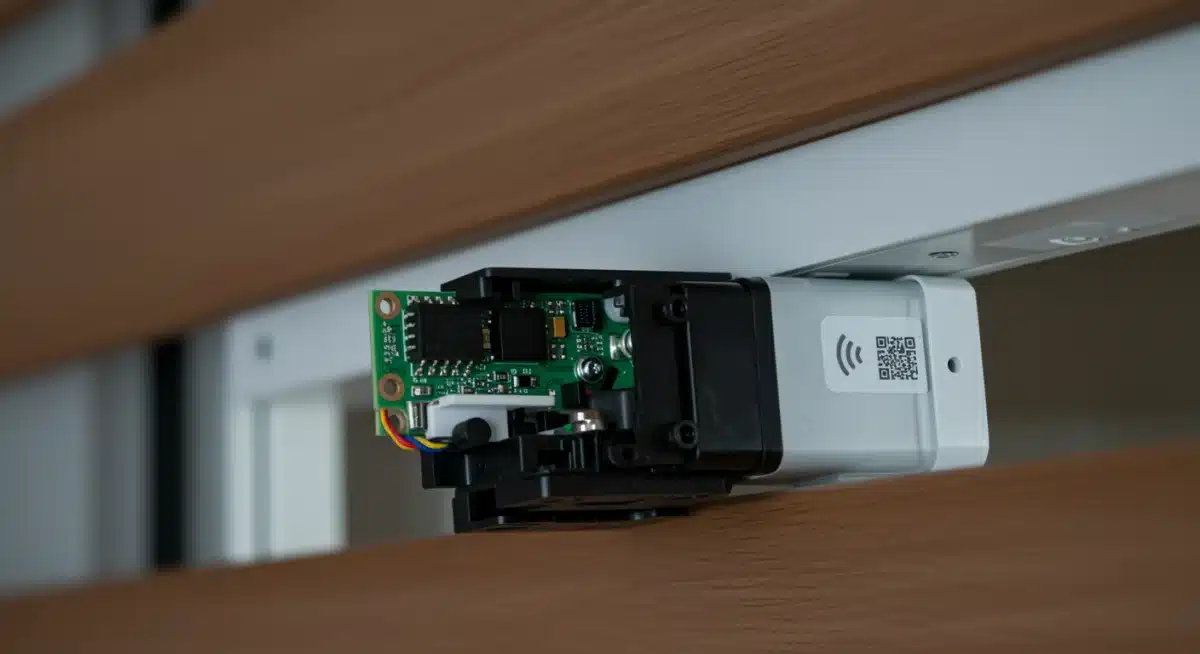
The evolution of smart blinds includes features specifically designed to enhance privacy without sacrificing natural light or views entirely.
Market Trends and Consumer Adoption in 2025
The market for smart blinds and shades is experiencing significant expansion as we move into 2025. Consumer awareness of the benefits, coupled with decreasing costs and easier installation, is fueling this growth. Industry analysts predict a steady increase in household penetration, especially in new constructions and renovation projects where smart home integration is a key selling point.
A major trend observed is the move towards more aesthetically pleasing and discreet designs. Manufacturers are focusing on slim profiles, quiet motors, and a variety of fabric options that blend seamlessly with diverse interior designs. This emphasis on form and function ensures that smart blinds are not just technological gadgets but integral parts of home decor.
Key Market Drivers
Several factors are currently driving the strong market performance of smart blinds, indicating continued growth.
- Increased Accessibility: More affordable options and DIY-friendly installation kits are making smart blinds accessible to a wider demographic.
- Integration Ecosystems: The growing number of smart home platforms and devices that seamlessly integrate with smart blinds simplifies setup and control.
- Sustainability Focus: Consumers are increasingly prioritizing eco-friendly and energy-saving solutions, aligning perfectly with the core benefits of smart blinds.
- Builder Adoption: New residential developments are frequently including smart blinds as standard features, recognizing their value proposition.
These drivers suggest that smart blinds are transitioning from niche products to mainstream home essentials, solidifying their presence in the smart home ecosystem.
Installation and Maintenance: What Homeowners Need to Know
For homeowners considering Smart Blinds Efficiency, understanding the installation and maintenance aspects is crucial. While some systems offer DIY-friendly options, professional installation is often recommended for optimal performance and integration with existing smart home setups. This ensures proper calibration, secure mounting, and seamless connectivity.
Maintenance for smart blinds is generally minimal, focusing primarily on keeping the fabrics clean and ensuring the motors operate smoothly. Battery-powered units require occasional battery replacement, while hardwired systems offer a more set-it-and-forget-it solution. Regular software updates, often delivered wirelessly, keep the systems secure and introduce new features.
Installation Considerations
Before investing in smart blinds, homeowners should evaluate several key factors related to installation and long-term care.
- Power Source: Decide between battery-operated, solar-powered, or hardwired options based on convenience and aesthetic preferences.
- Window Type and Size: Ensure compatibility with existing window frames and consider custom sizing for unique windows.
- Smart Home Hub: Verify that chosen blinds integrate with your preferred smart home platform (e.g., Zigbee, Z-Wave, Wi-Fi).
- Professional vs. DIY: Assess comfort level with technology and tools; complex installations may benefit from expert service.
Addressing these points upfront can prevent potential headaches and ensure a smooth transition to automated window treatments.
The Financial Outlook: Investments and Returns in 2025
The financial impact of smart blinds and shades in 2025 extends beyond immediate utility savings, encompassing broader implications for property value and long-term investment. As the smart home market matures, features like automated window treatments are becoming standard expectations rather than mere upgrades, influencing buyer decisions and appraisal values.
For investors in real estate, integrating smart blinds can enhance a property’s appeal and command a higher rental yield or sale price. The perception of a ‘future-proofed’ home, equipped with energy-saving and convenience-boosting technologies, is a powerful market differentiator. Furthermore, the reduced operational costs associated with energy efficiency contribute to a lower total cost of ownership for residents, making properties more attractive.
Long-Term Financial Benefits
The financial advantages of smart blinds are multifaceted and extend well into the future, providing sustained value.
- Enhanced Resale Value: Modern, energy-efficient homes with integrated smart technology are highly desirable in the current market.
- Lower Insurance Premiums: Some insurers offer discounts for homes with advanced security features, which smart blinds can contribute to.
- Reduced Wear and Tear: By regulating indoor temperatures, smart blinds can prolong the life of furniture, flooring, and artwork by protecting them from excessive sun exposure.
- Sustainable Living Incentives: Government and local programs increasingly reward homeowners for adopting sustainable practices, potentially offering tax credits or grants.
These considerations highlight that the investment in smart blinds is not just about immediate comfort, but about building a more valuable, efficient, and resilient home asset for the future.
| Key Point | Brief Description |
|---|---|
| Energy Savings | Smart blinds significantly reduce heating/cooling costs by optimizing solar gain and insulation, leading to lower utility bills. |
| Enhanced Privacy & Security | Automated control and integration with security systems offer on-demand privacy and enhanced deterrents against intruders. |
| Increased Property Value | Homes equipped with smart blinds are more attractive to buyers and can command higher resale values due to modern amenities and efficiency. |
| Technological Advancements | Continuous innovation in AI, sensors, and integration makes smart blinds more intuitive, efficient, and user-friendly. |
Frequently Asked Questions About Smart Blinds
Smart blinds can significantly reduce energy consumption by up to 10-15% on average, primarily by optimizing solar heat gain in summer and retaining heat in winter. Their automated adjustments minimize the workload on HVAC systems, leading to noticeable savings on utility bills over a year.
Installation complexity varies. Many modern smart blinds offer DIY-friendly options, especially for battery-powered models. However, for hardwired systems or full integration with complex smart home ecosystems, professional installation is often recommended to ensure seamless operation and optimal performance.
Smart shades offer enhanced privacy through scheduled closures, remote control, and randomization modes that simulate occupancy. This provides instant on-demand privacy and an added layer of security by deterring potential intruders, especially when homeowners are away or in urban settings.
Yes, integrating smart blinds can increase your home’s appeal and potentially its resale value. Modern buyers often seek properties with advanced smart home technology and energy-efficient features. Such upgrades position your home as future-proofed and desirable, justifying a higher market price.
Smart blinds generally require minimal maintenance. This includes regular cleaning of the fabric and occasional battery replacement for wireless models. Software updates are typically delivered over-the-air, ensuring the system remains current and functional without significant user intervention.
Impact and Implications
The ongoing evolution of smart blinds and shades signals a fundamental shift in how homeowners approach comfort, security, and resource management. As 2025 progresses, the financial implications will become even more pronounced, with early adopters reaping the benefits of reduced energy costs and increased property values. The industry is poised for continued innovation, driven by advancements in AI and IoT, suggesting that these systems will become an indispensable component of the modern, sustainable home. Watching how these technologies further integrate into broader urban planning and energy grids will be key to understanding their full long-term impact.
